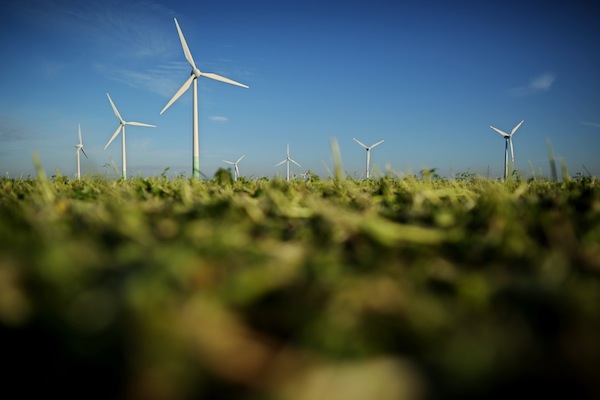Even the most ardent supporters of renewable energy would agree that wind turbines should be erected only when the output is worthwhile. If a huge rotating beast is to blot a corner of the British countryside, then it must produce as much energy as is feasibly possible.
However, this does not appear always to be the case. In my article for this week’s Spectator, we uncover an abuse of government subsidies, in which green developers erect large turbines and then throttle the output (known as ‘de-rating’) in order to maximise profits:
‘Under the government’s Feed-In Tariff (FIT) scheme, which aims to make renewable energies competitive with fossil fuels, the size of a turbine is measured not by height but by power output. If a turbine pumps out more than 500kW, its owners receive 9.5p per kilowatt hour. But a ‘smaller’ sub-500kW one receives a subsidy of 17.5p per kilowatt hour, supposedly to compensate for its lower efficiency. The idea is to lure smaller wind-power producers into the market.’
‘Problem is, while smaller turbines are more popular with the public, those designs don’t produce anything like the 500kW needed to take full advantage of the subsidy. So instead, investors are buying big, powerful turbines and downgrading them, tweaking their components to churn out no more than the magic 500kW. It’s simply far more lucrative to hobble bigger turbines — machines that ought to be capable of producing almost twice as much electricity.’
Given our current rock-bottom interest rates, the Feed-in Tariff is a veritable license to print money. A source in the industry informed me that a 900kW turbine running at full output would return an substantial 7 to 9 percent return on investment per year; but, turned down to 500kW this return shoots up to an astonishing 17 to 20 per cent.
Manufactures have cottoned onto this opportunity and now produce models that are marketed to maximise revenue from the government. Compare Dutch firm EWT’s 52/54 500kW model and their 52/5400kW model. Both have the same blade diameter and same pillar height. The only difference is the power output and rated wind speed. I spoke to an EWT salesman, who informed me that inferior internal components are behind the limited power output. The physical difference between these two models — the height of seven double decker buses — is non existent.
The Department of Energy and Climate Change is currently undertaking a review of the FIT subsidy, in order to reduce the tariffs across the board thanks to government-wide cuts. Several of the review’s participants raised the issue of ‘de-rating’ and this is what DECC had to say:
‘In regard to the so-called de-rating of turbines. We have examined the proposal and we do not consider that the technical proposals put forward to address the issue would necessarily bring net benefits. and could potentially limit access to the FITs scheme. However, we propose to keep open discussions with the industry about the issue in future.’
I asked DECC to clarify this statement, in particular what these future ‘open discussions’ would entail, as well as why they decided against reforming the methods used to measure turbines for subsidies. They are yet to respond. At a time when renewable energy subsidies are in the sights of No.11, DECC is doing little to reassure taxpayers who are having their landscapes ruined, and all in the name of saving the planet.
UPDATE: BusinessGreen reports that after the publication of this story, a DECC spokesperson has said the department will tackle the subsidy loophole ‘as soon as possible’:
‘As we indicated in our Government response to the FiTs consultation published in July, DECC takes the issue of turbine de-rating seriously,” she said. “We have acted to address this issue for hydro sites and are committed to doing the same for wind. Following publication of the response we have already met with representatives from the sector to take this forward’
However, DECC have yet to provide any concrete timings or details on how they intend to do this. The government stated they were aware of de-rating in their consultation paper im July 2012, so for now the scam continues.






Comments